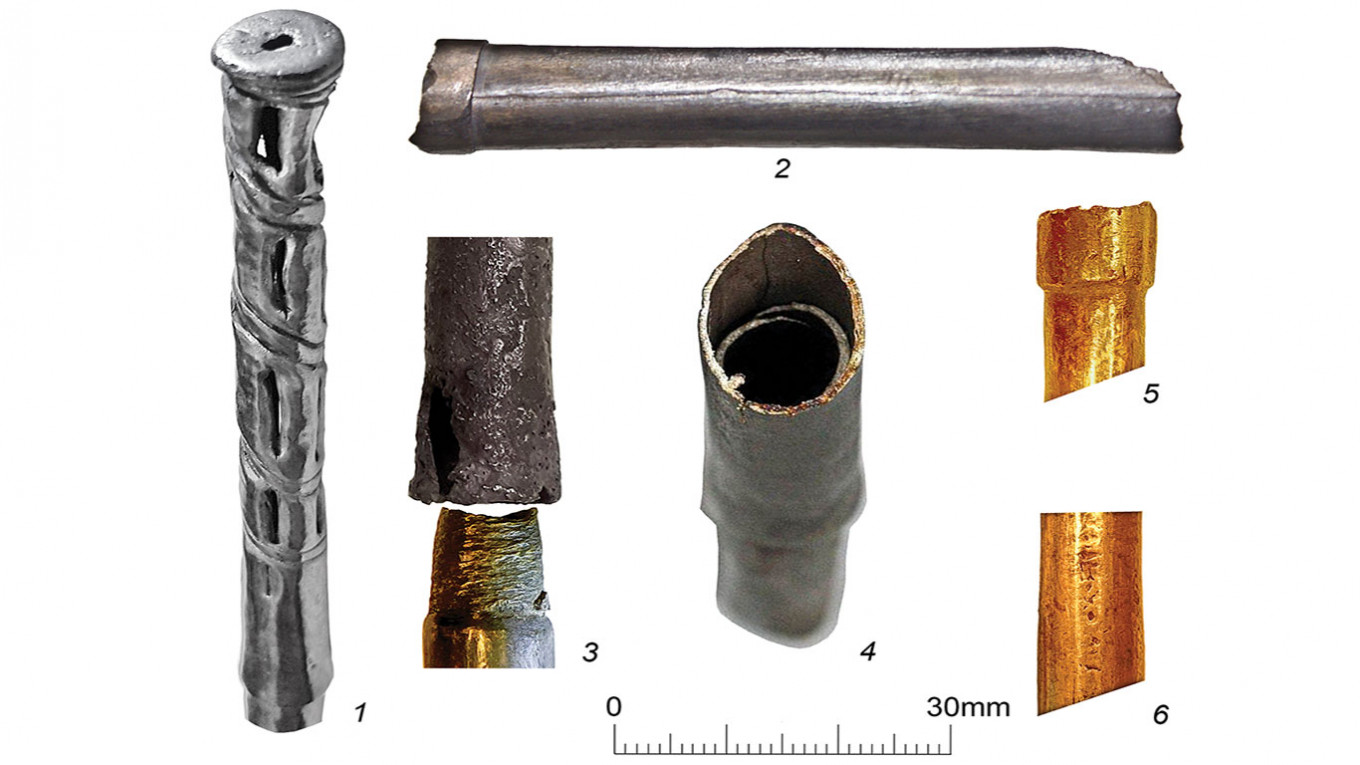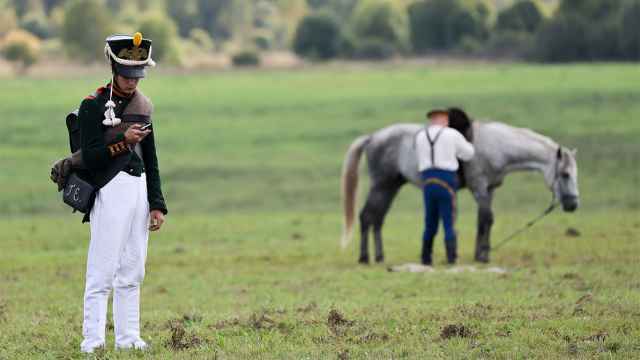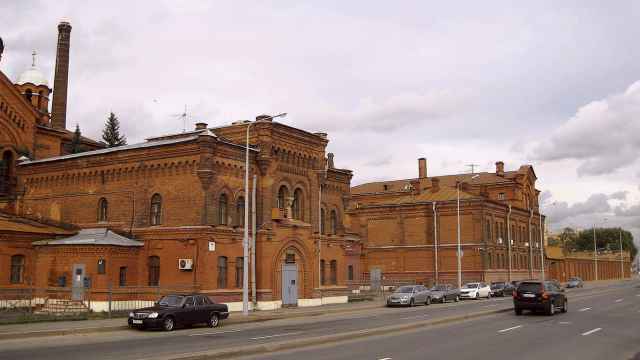A set of Bronze Age gold and silver tubes discovered in southern Russia more than a century ago may be the first surviving straws used for communal beer drinking, researchers said Wednesday.
Eight 1-meter-long tubes were found alongside other precious artifacts at a burial mound near the North Caucasus city of Maikop, which holds an archeological site that dates back to 3700-3000 BC. Russian archeologist Nikolai Veselovsky, who unearthed the burial mound in 1897, referred to the intricate tubes as “scepters.”
“Re-examination of these objects, however, suggests they were used as tubes for the communal drinking of beer,” authors of the latest research claimed in the Antiquity Journal.
They said their findings date back to a period that witnessed the onset of large-scale brewing during the Bronze Age in western Asia and the earliest depictions of drinking through a straw that became popular in Mesopotamian art.
The authors added that the thin tubes’ perforated tips were consistent with similar detachable metal straw-tip strainers used in reed straws that were widely used in the region in the second millennium BC.
Residue analysis also showed barley starch granules inside one of the eight tubes, according to the study authors from the Russian Academy of Sciences.
“The set of eight drinking tubes in the Maikop tomb may therefore represent the feasting equipment for eight individuals, who could have sat to drink beer from the single, large jar found in the tomb,” they said.
“If correct, these objects represent the earliest material evidence of drinking through long tubes.”
The tubes are held alongside other finds excavated from the Maikop mounds, or kurgans, in St. Petersburg’s State Hermitage Museum.
A Message from The Moscow Times:
Dear readers,
We are facing unprecedented challenges. Russia's Prosecutor General's Office has designated The Moscow Times as an "undesirable" organization, criminalizing our work and putting our staff at risk of prosecution. This follows our earlier unjust labeling as a "foreign agent."
These actions are direct attempts to silence independent journalism in Russia. The authorities claim our work "discredits the decisions of the Russian leadership." We see things differently: we strive to provide accurate, unbiased reporting on Russia.
We, the journalists of The Moscow Times, refuse to be silenced. But to continue our work, we need your help.
Your support, no matter how small, makes a world of difference. If you can, please support us monthly starting from just $2. It's quick to set up, and every contribution makes a significant impact.
By supporting The Moscow Times, you're defending open, independent journalism in the face of repression. Thank you for standing with us.
Remind me later.






